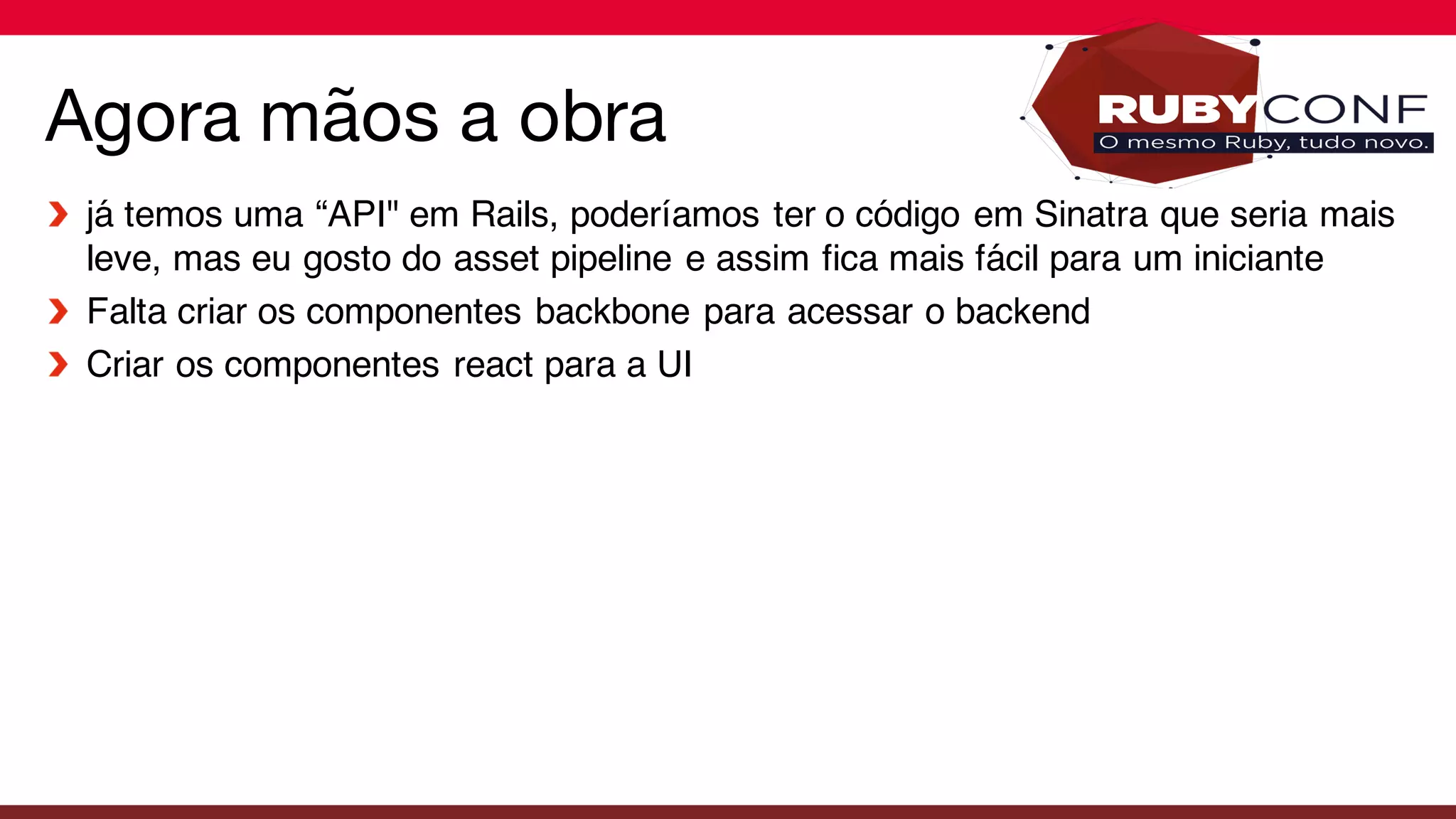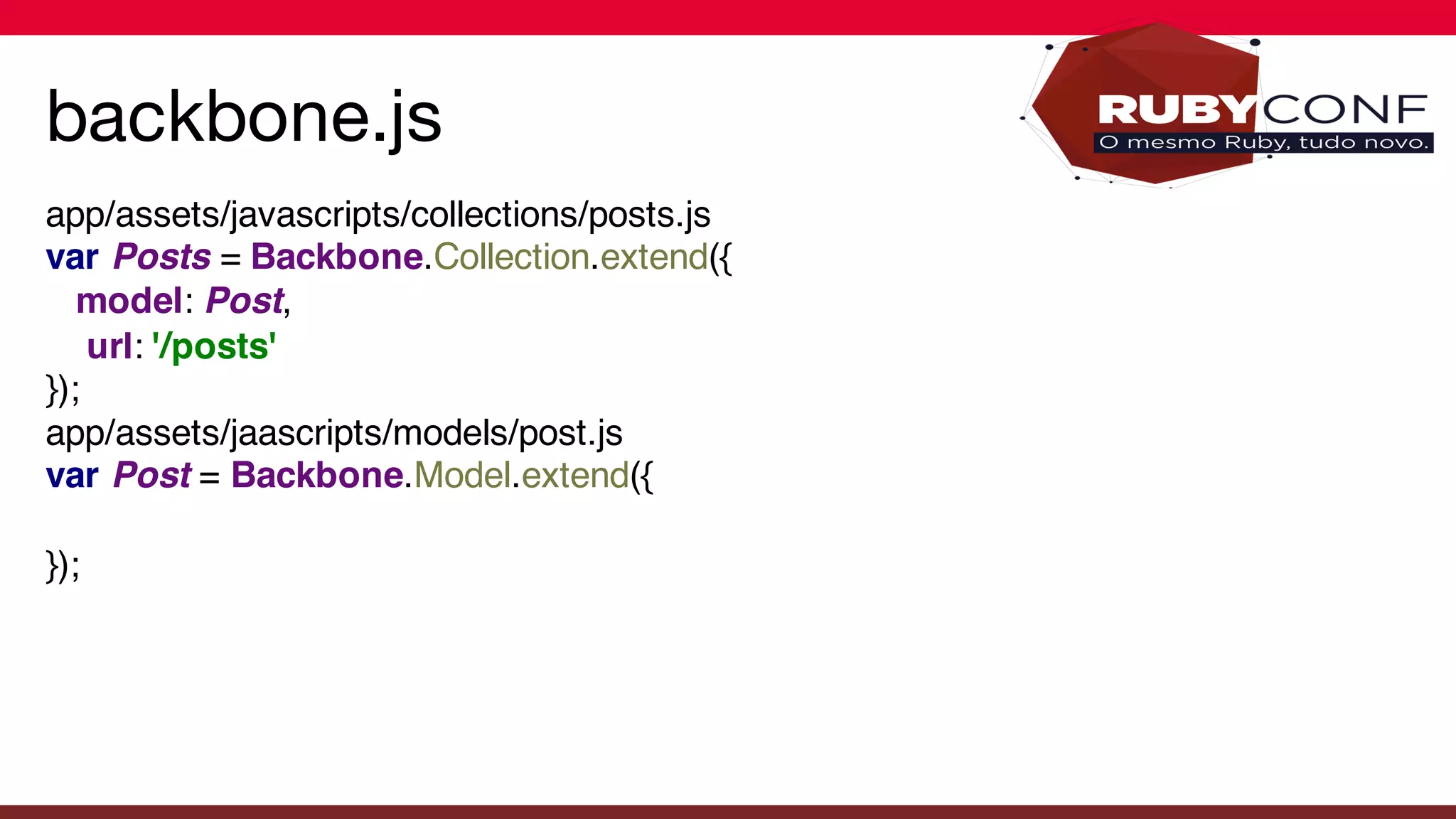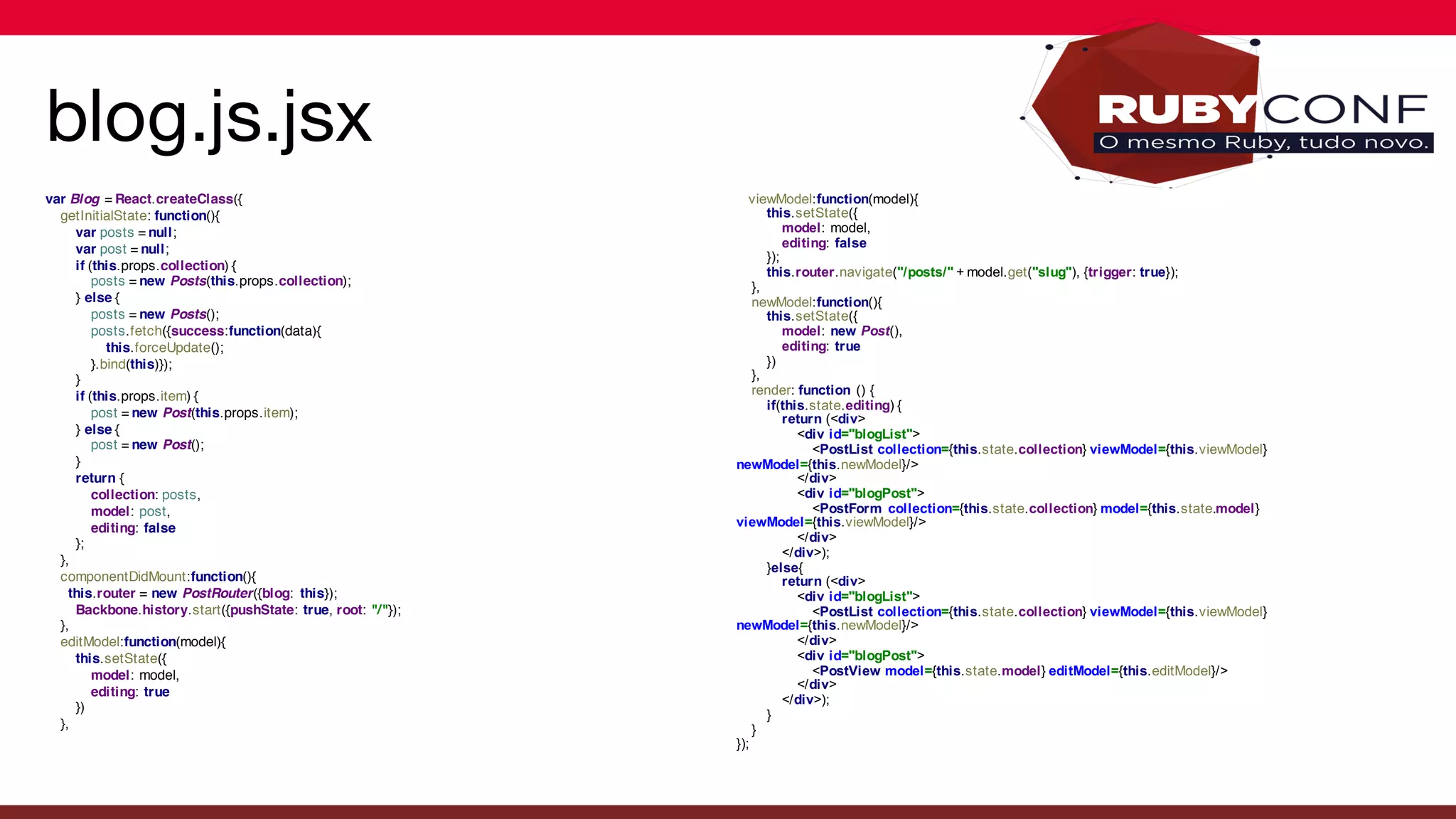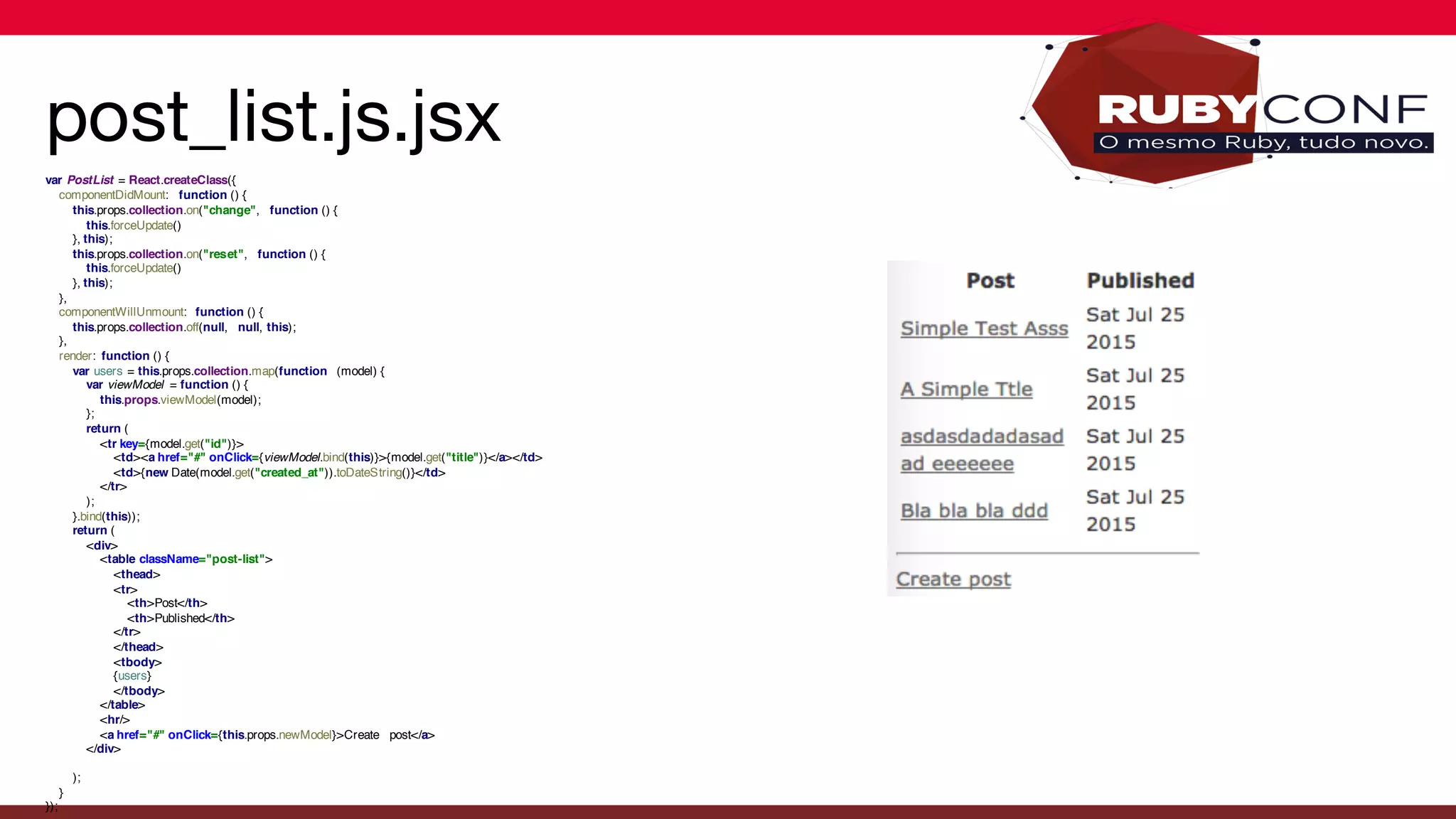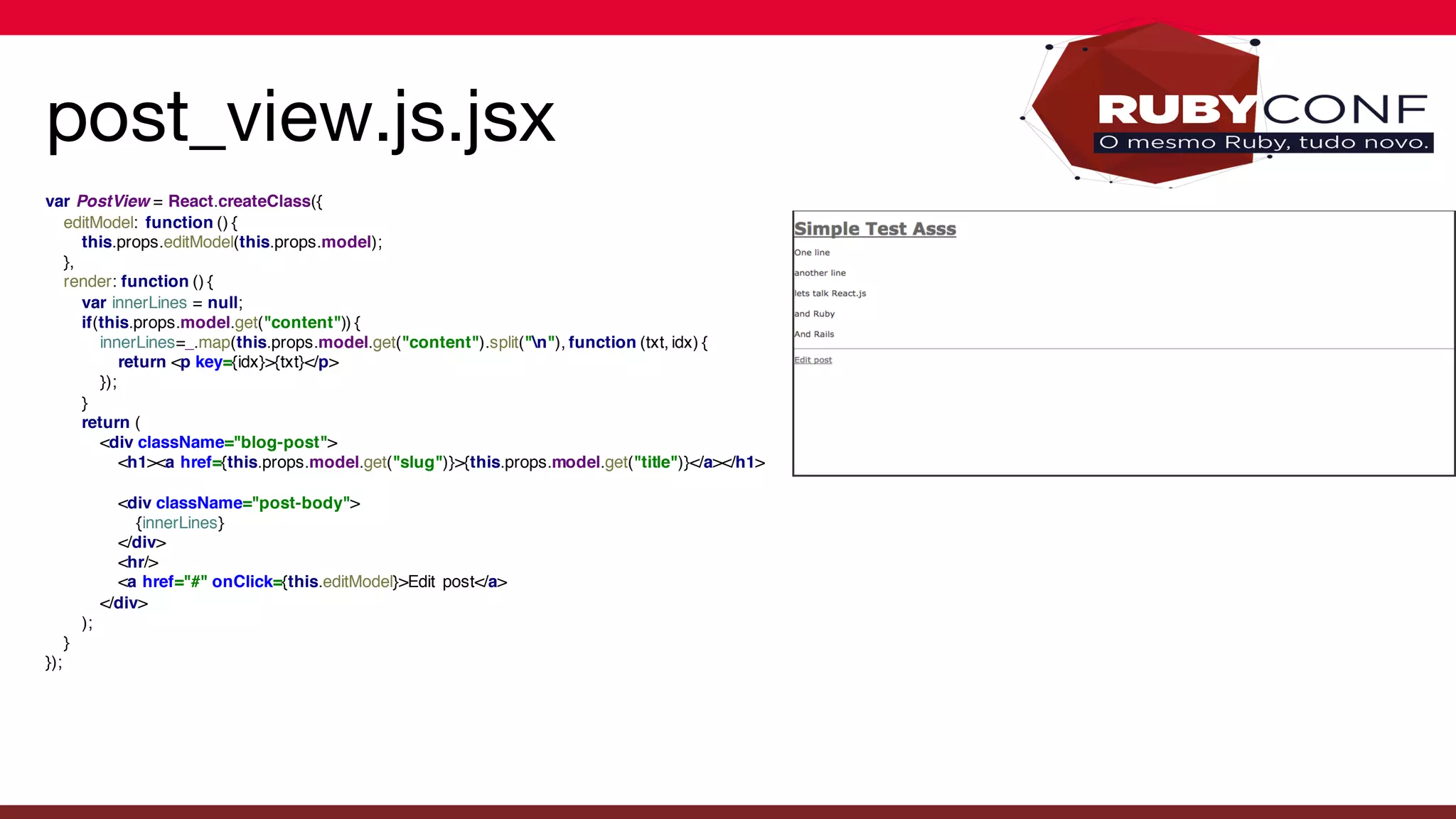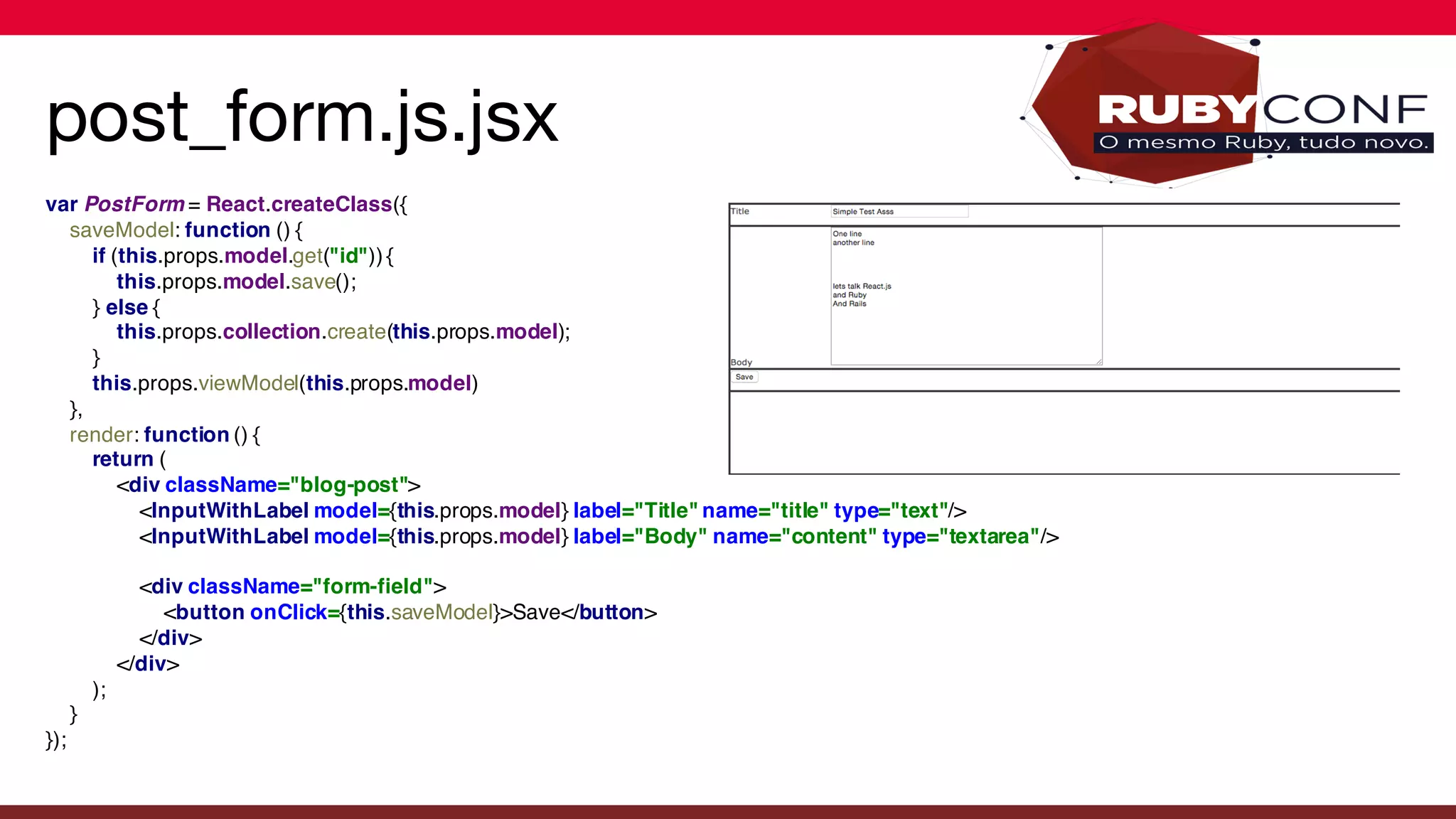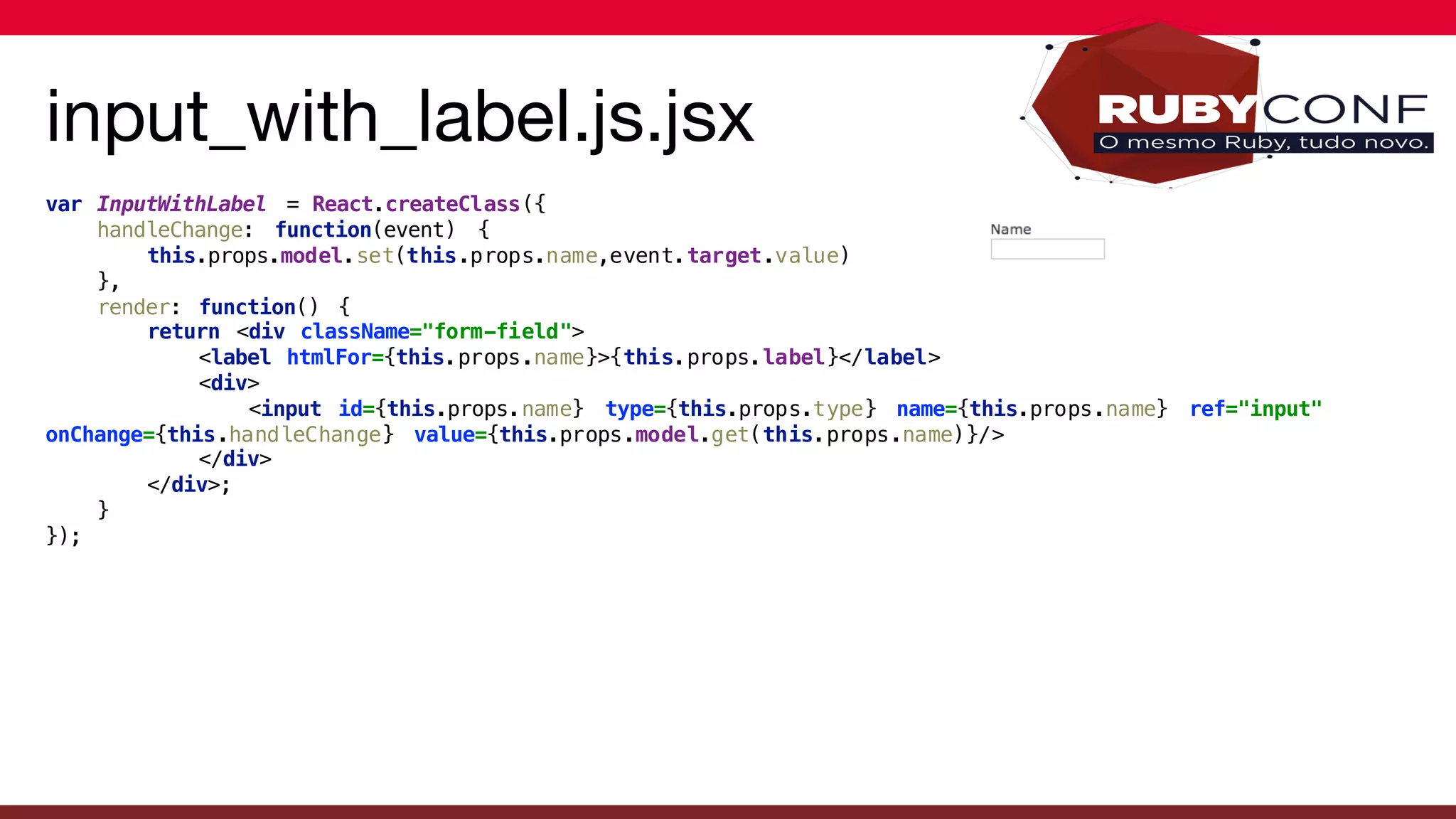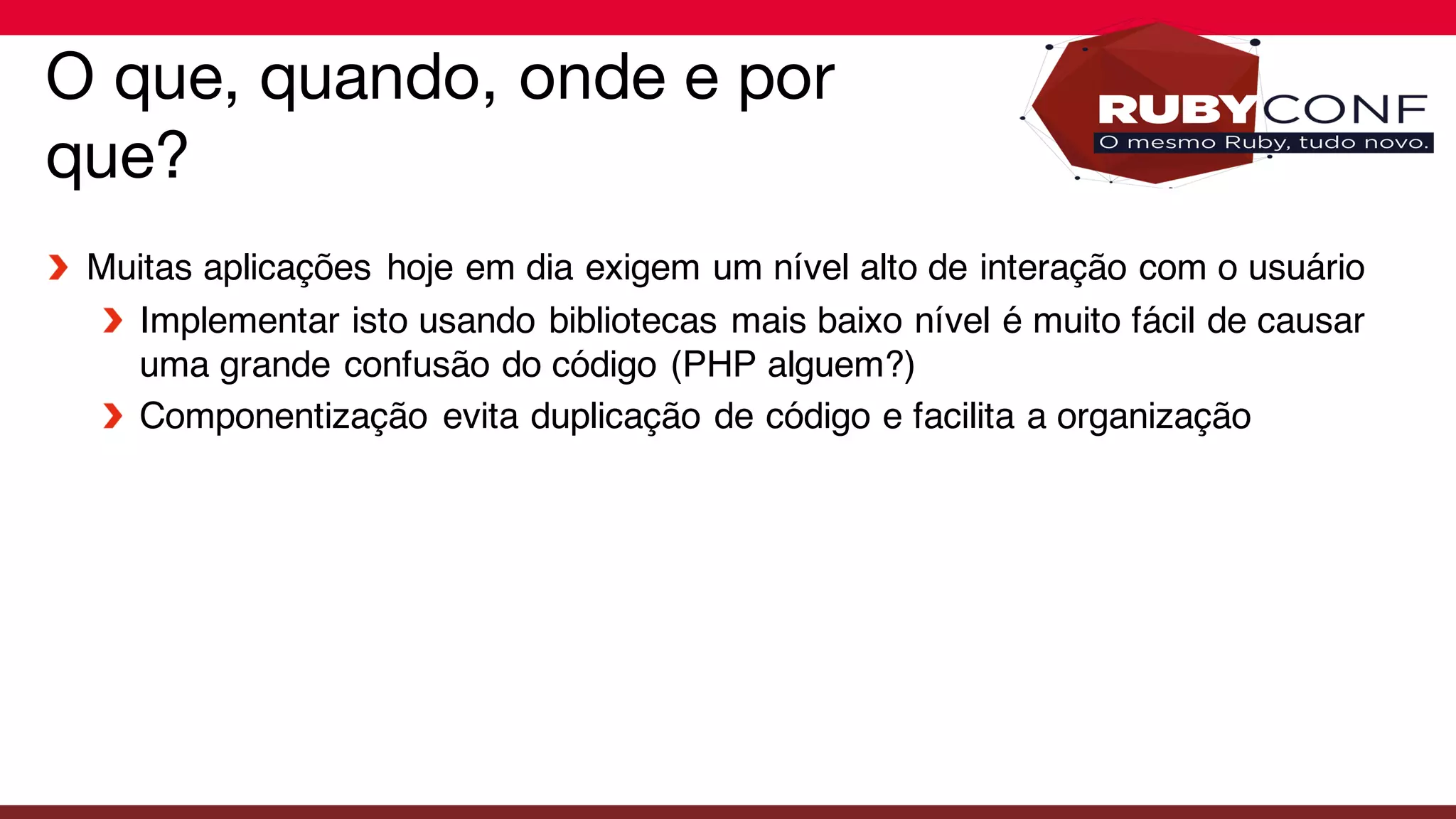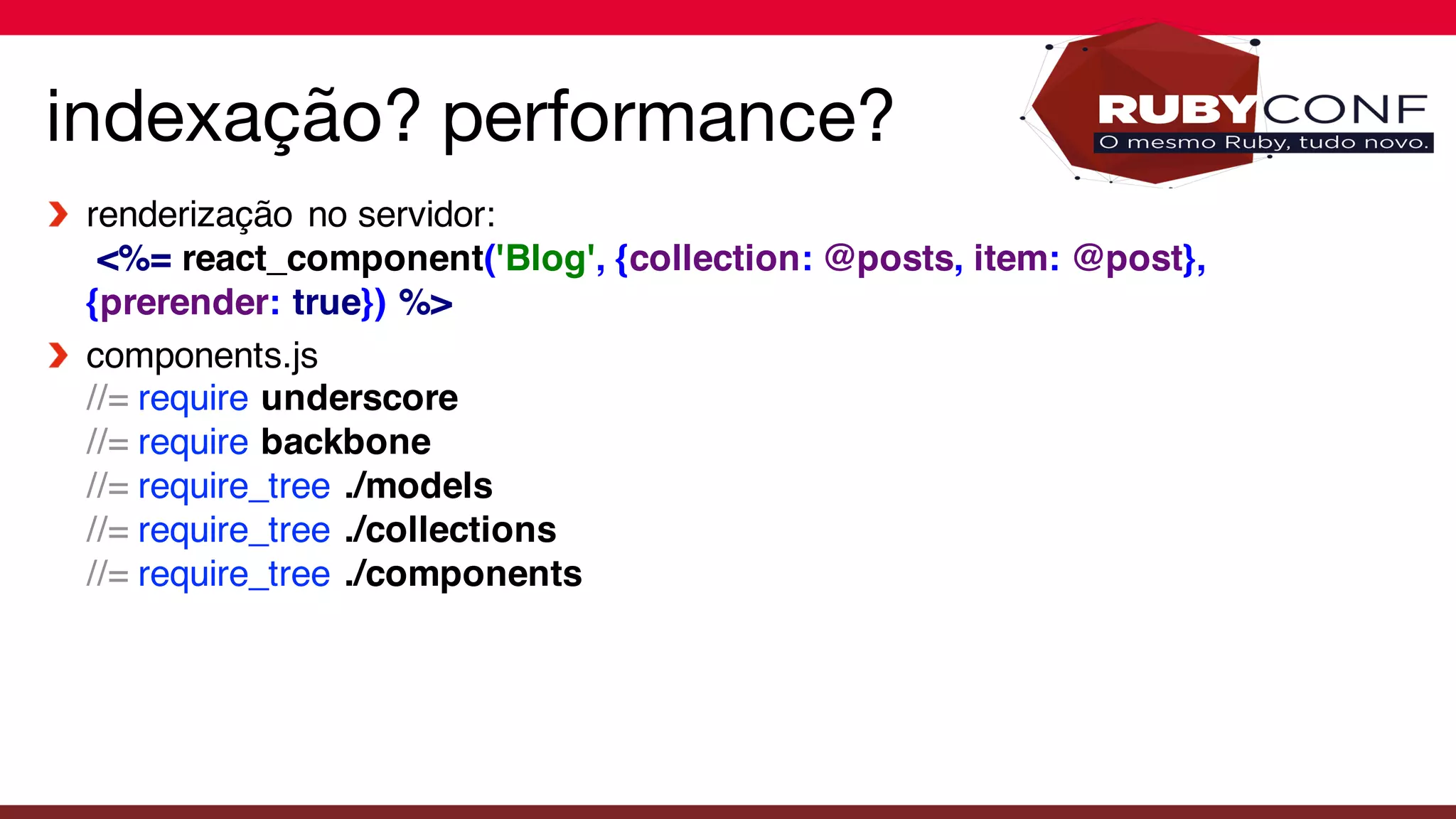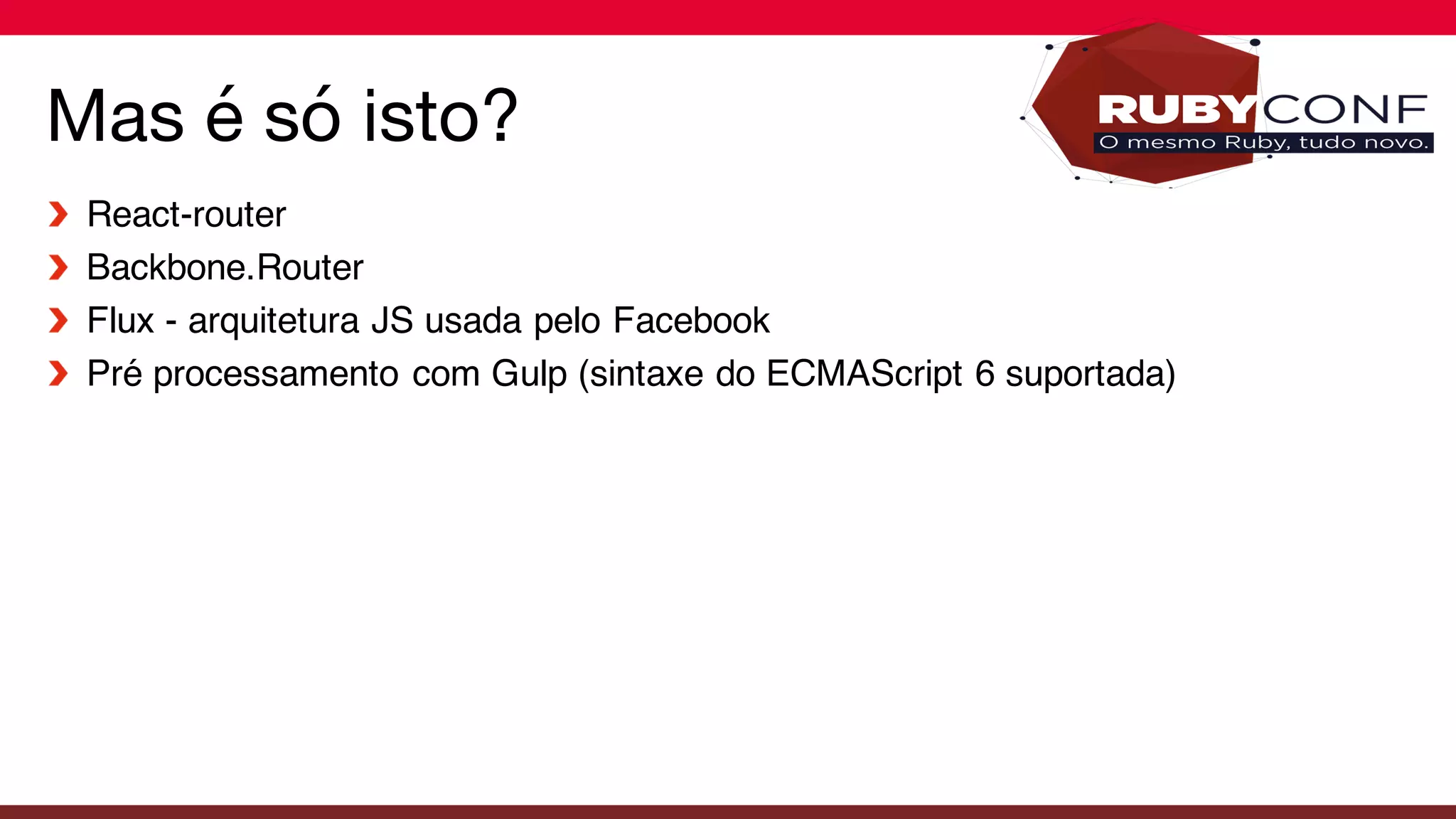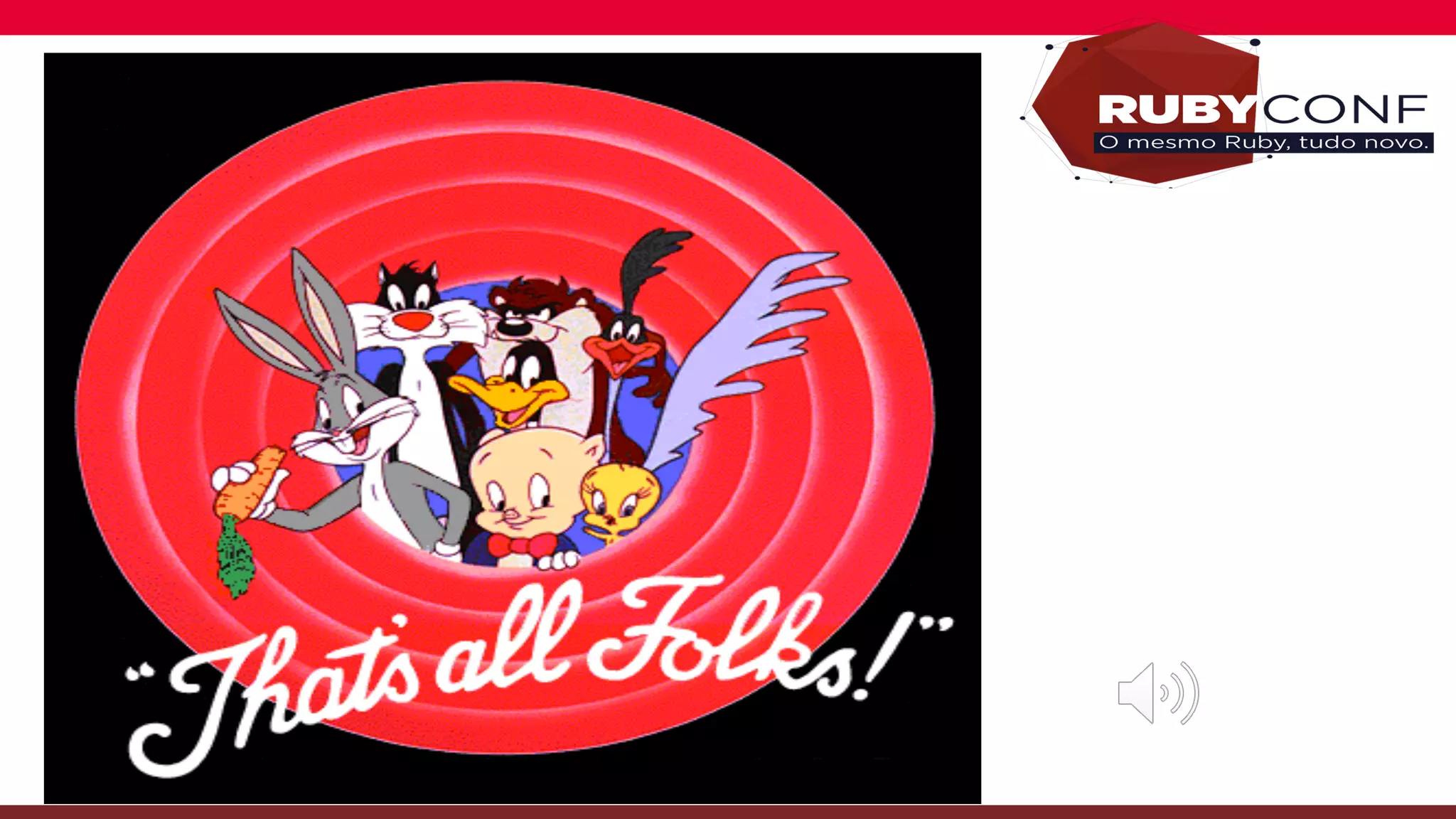O documento descreve uma aplicação web criada com Ruby on Rails no backend e React.js no frontend. A aplicação é um blog simples onde os usuários podem criar, editar e visualizar posts. Componentes React são usados para construir as interfaces do usuário enquanto Backbone.js facilita a comunicação entre o cliente e o servidor. O objetivo é demonstrar como criar uma Single Page Application usando essas tecnologias.
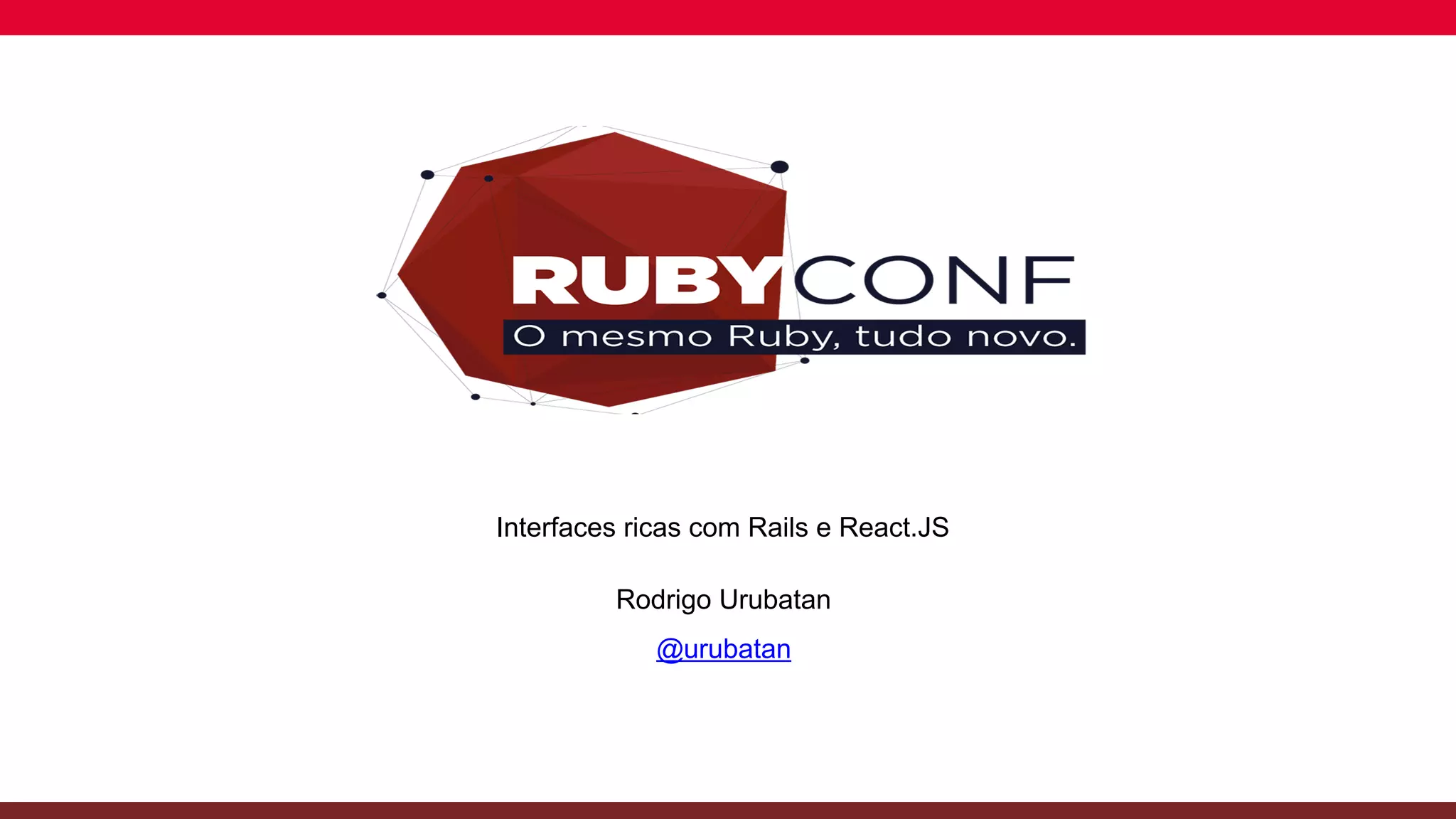
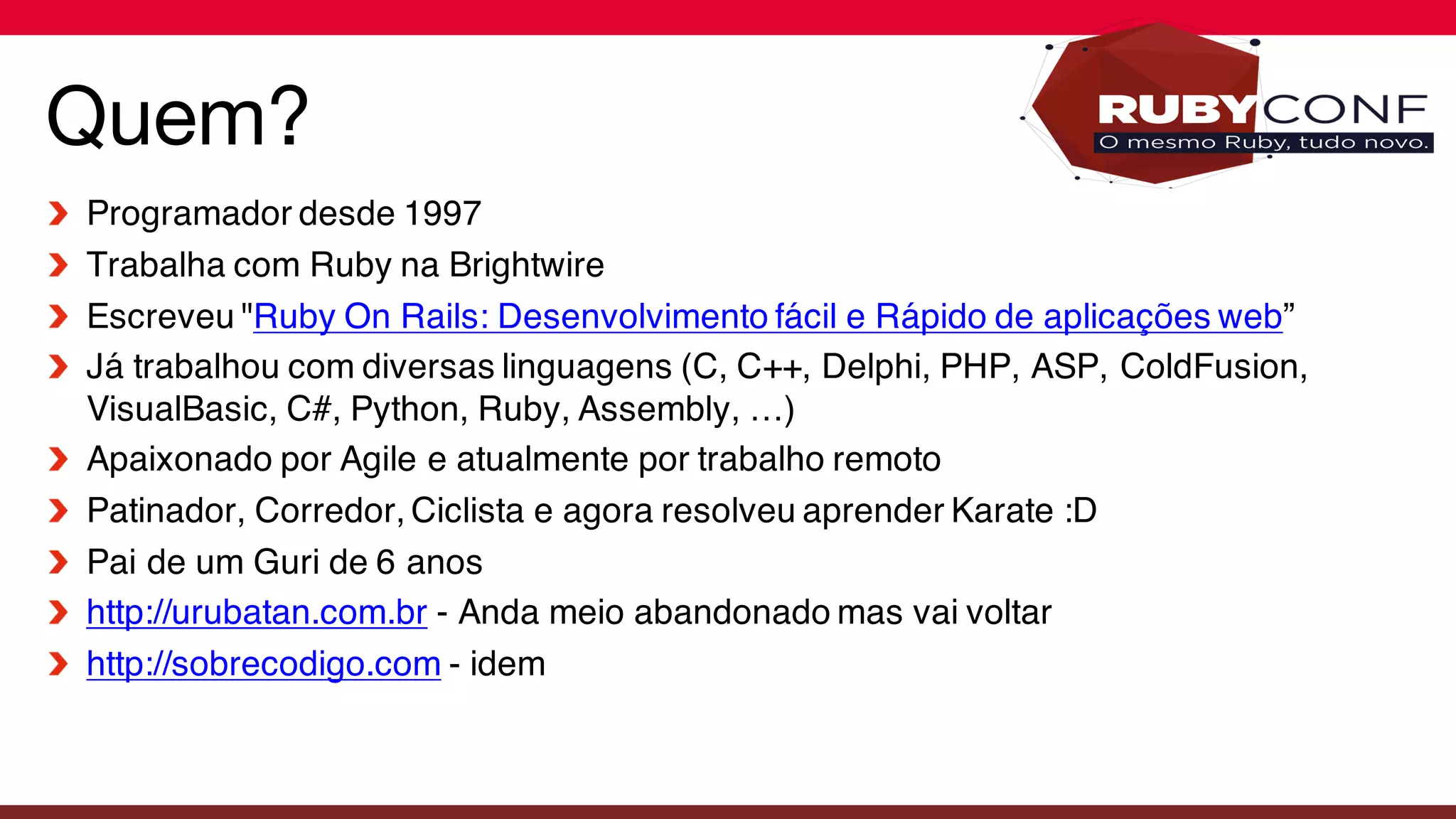
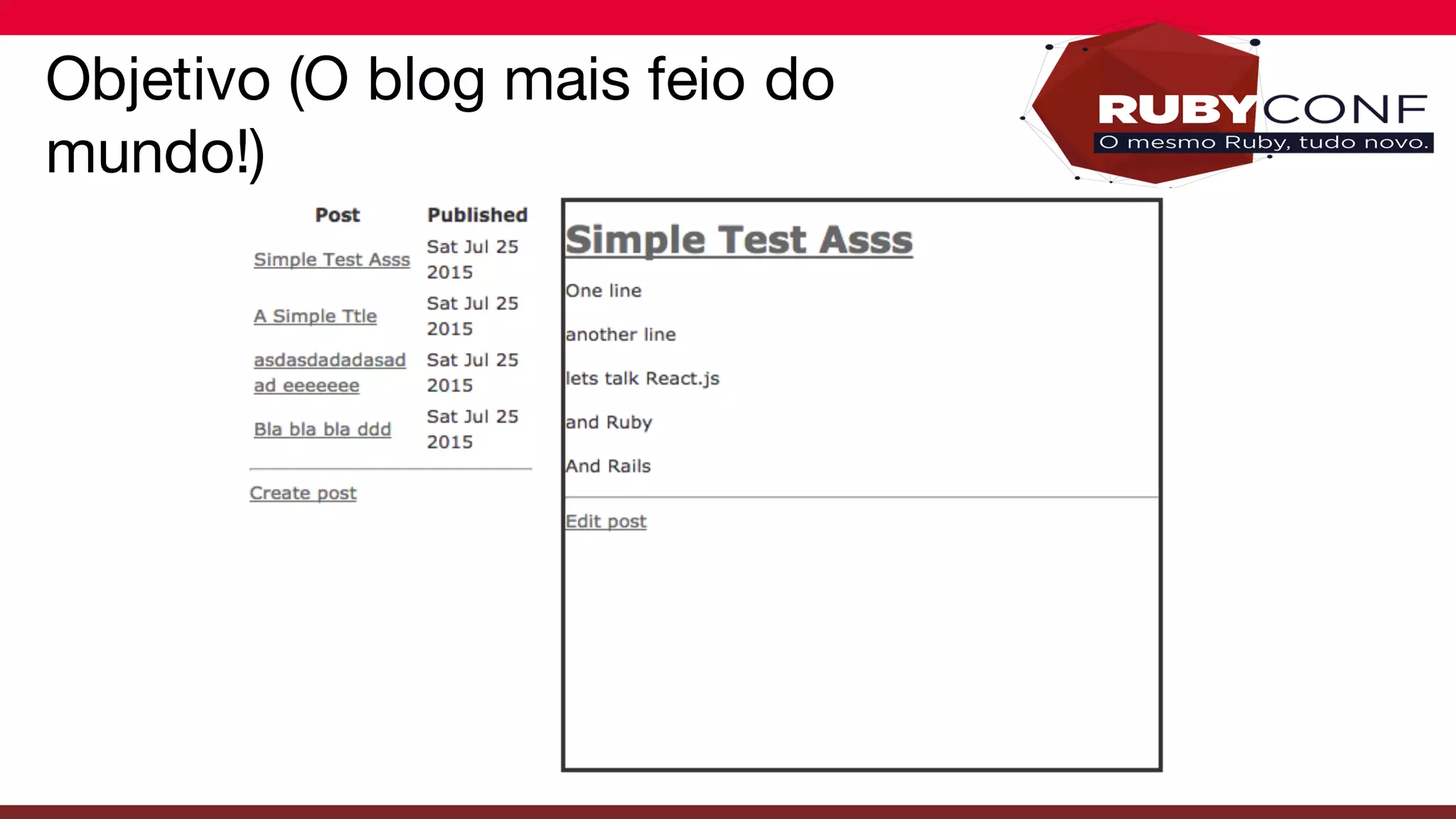
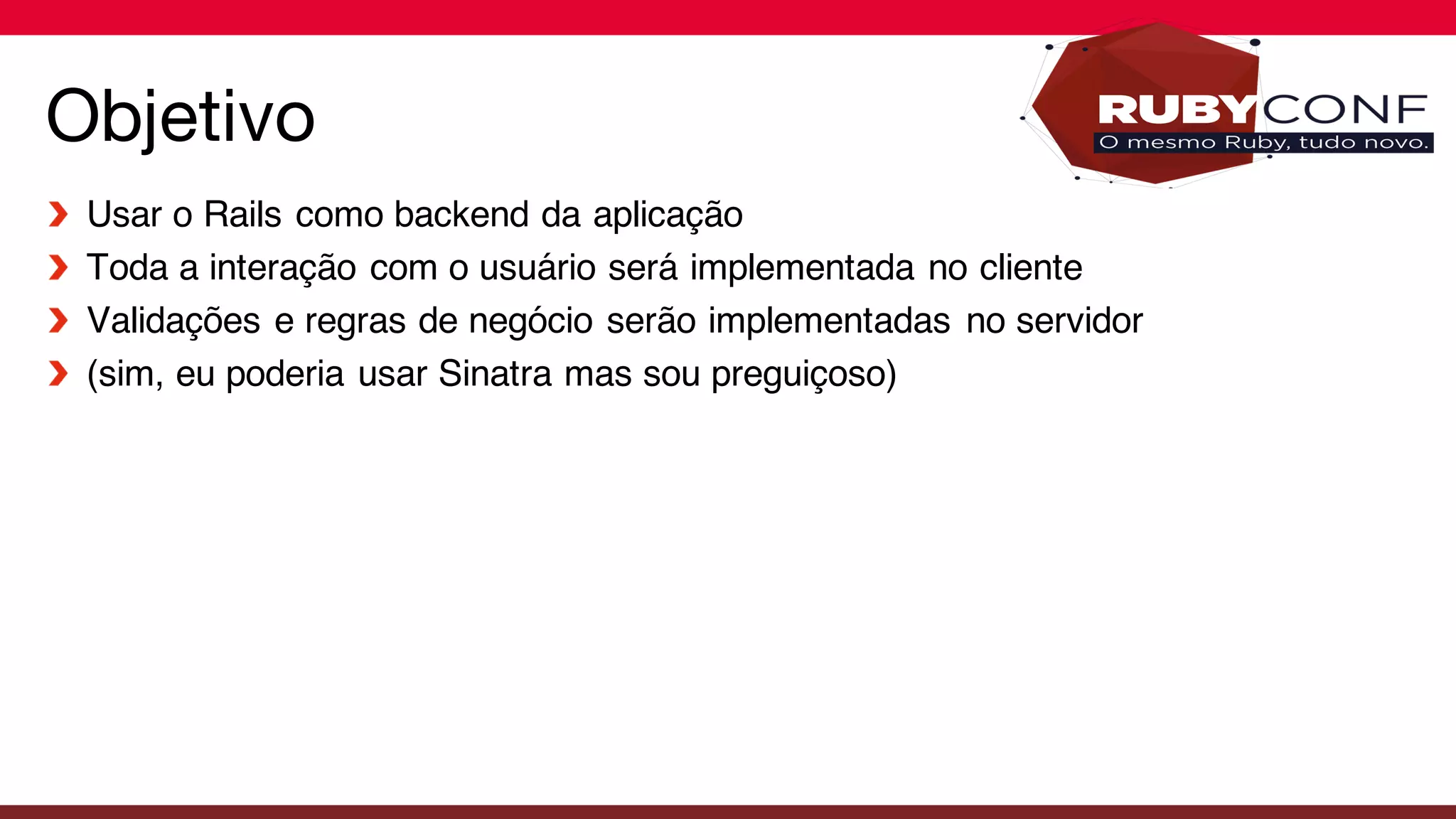
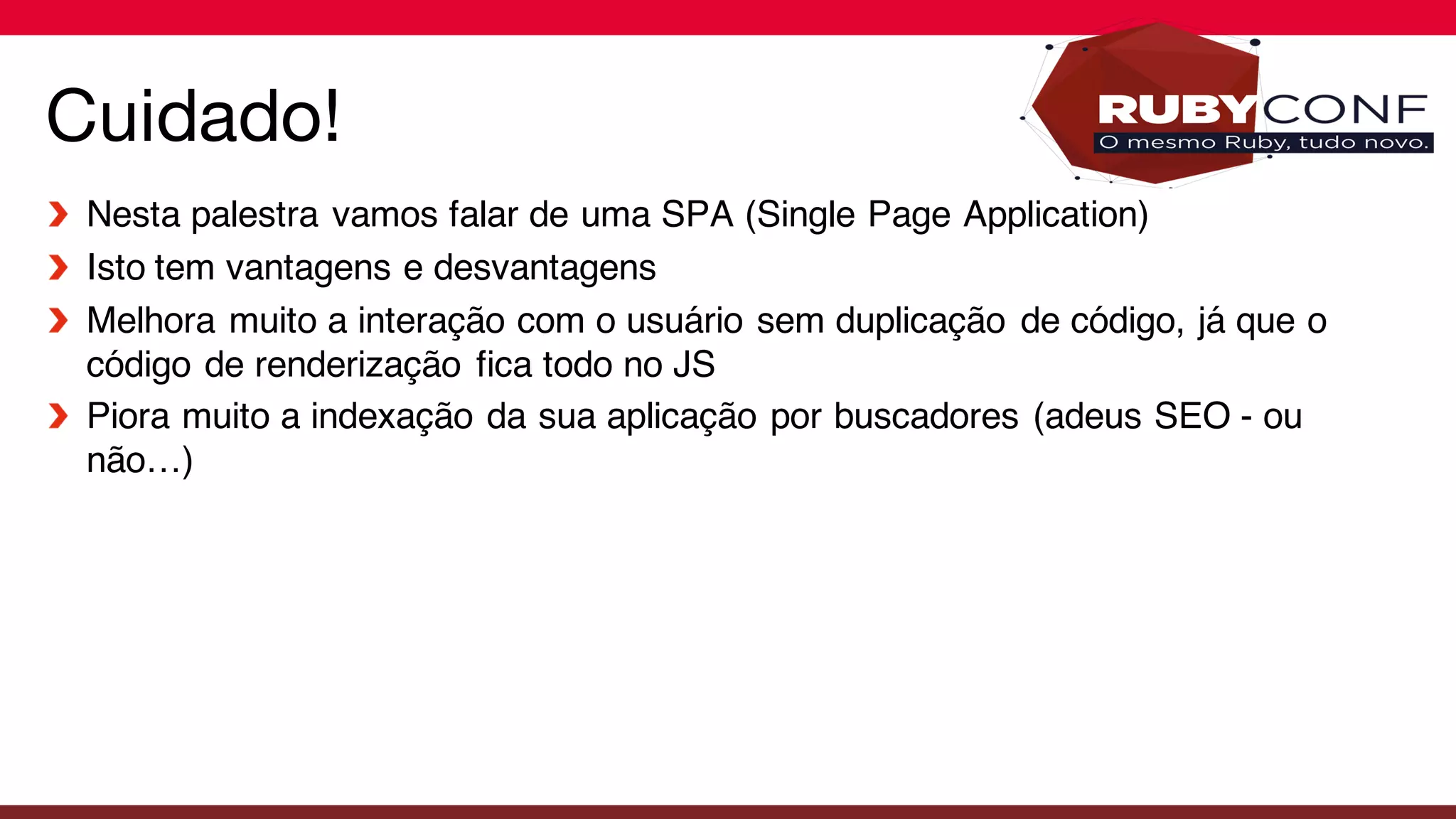
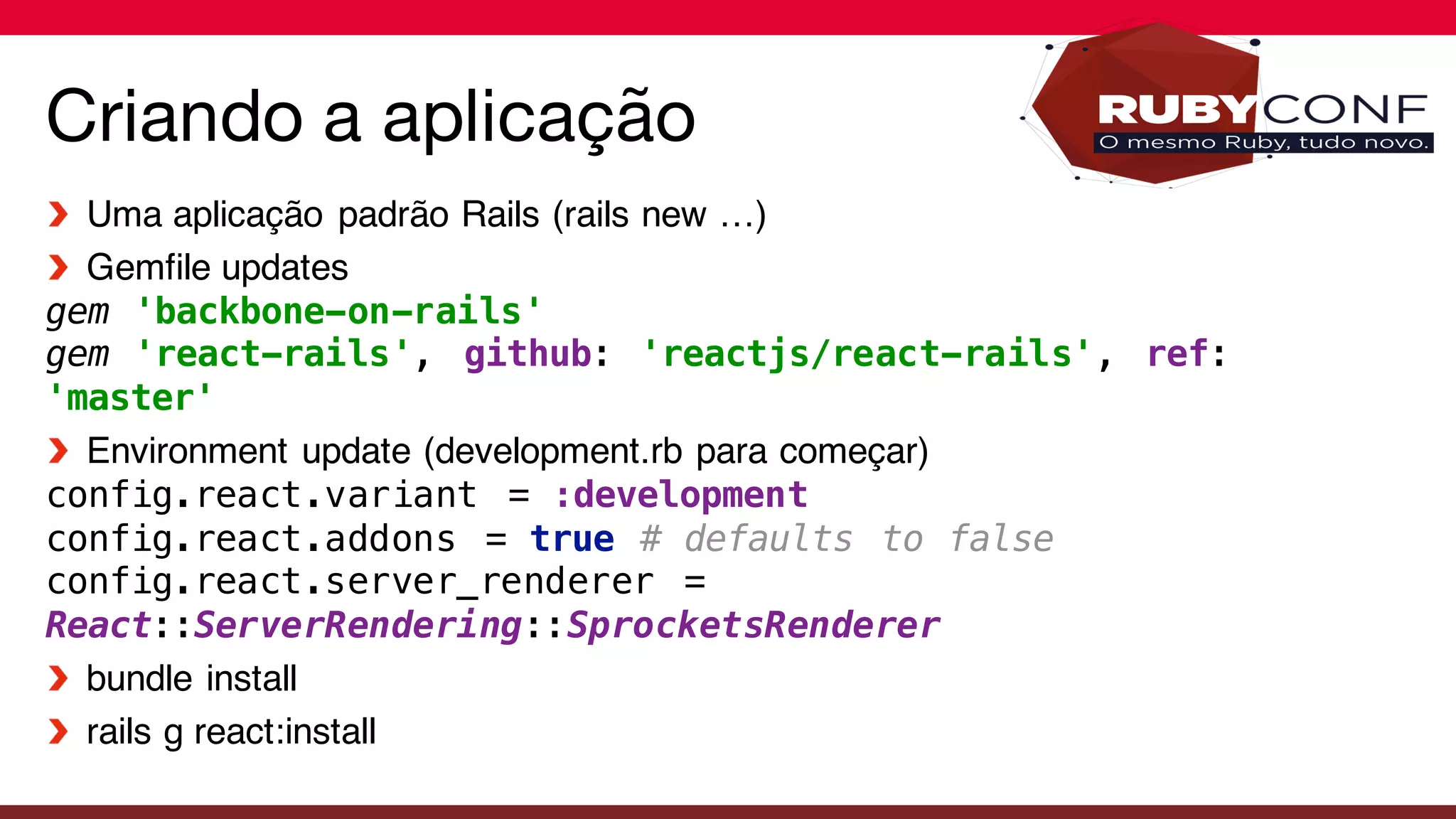
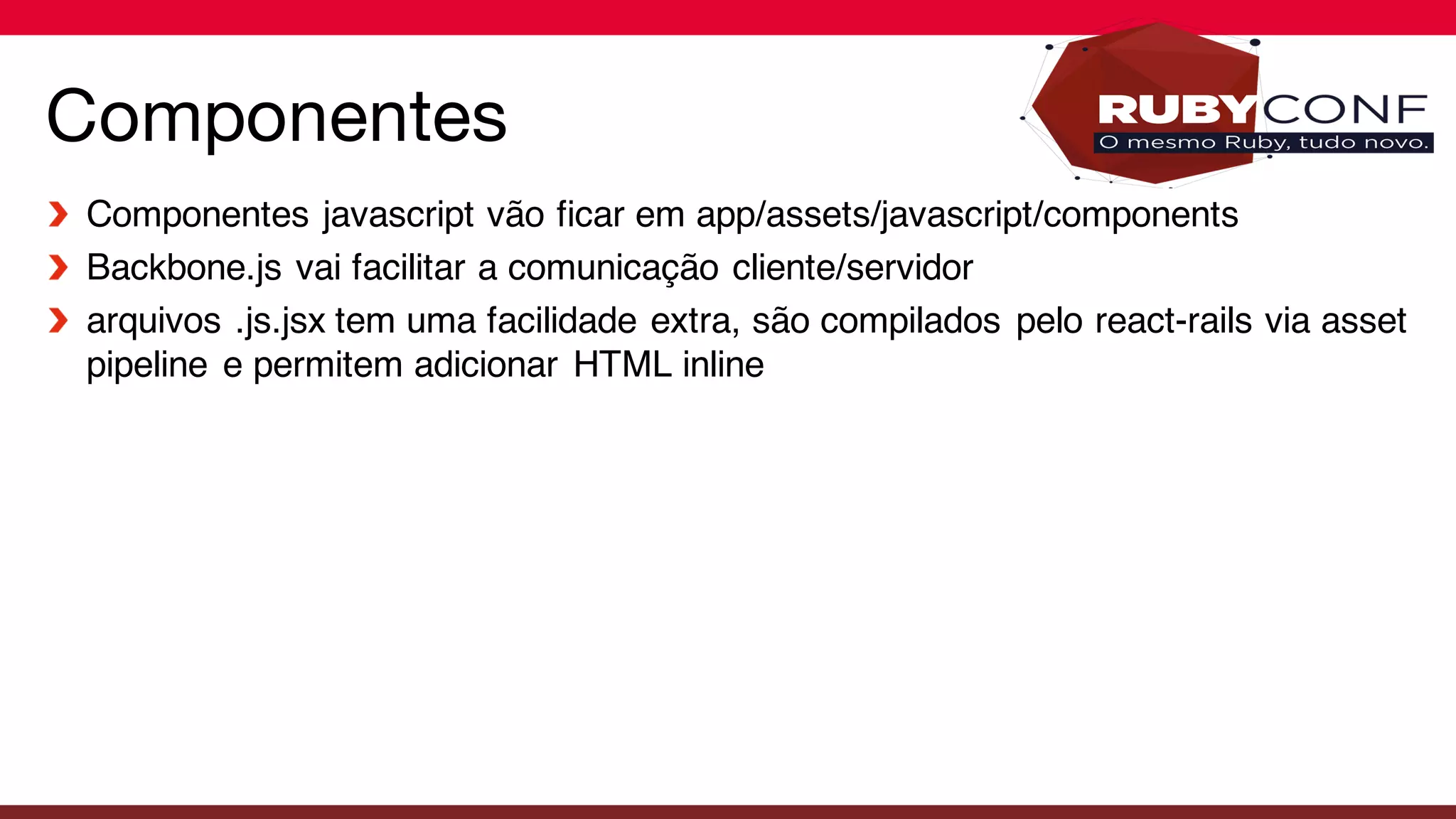
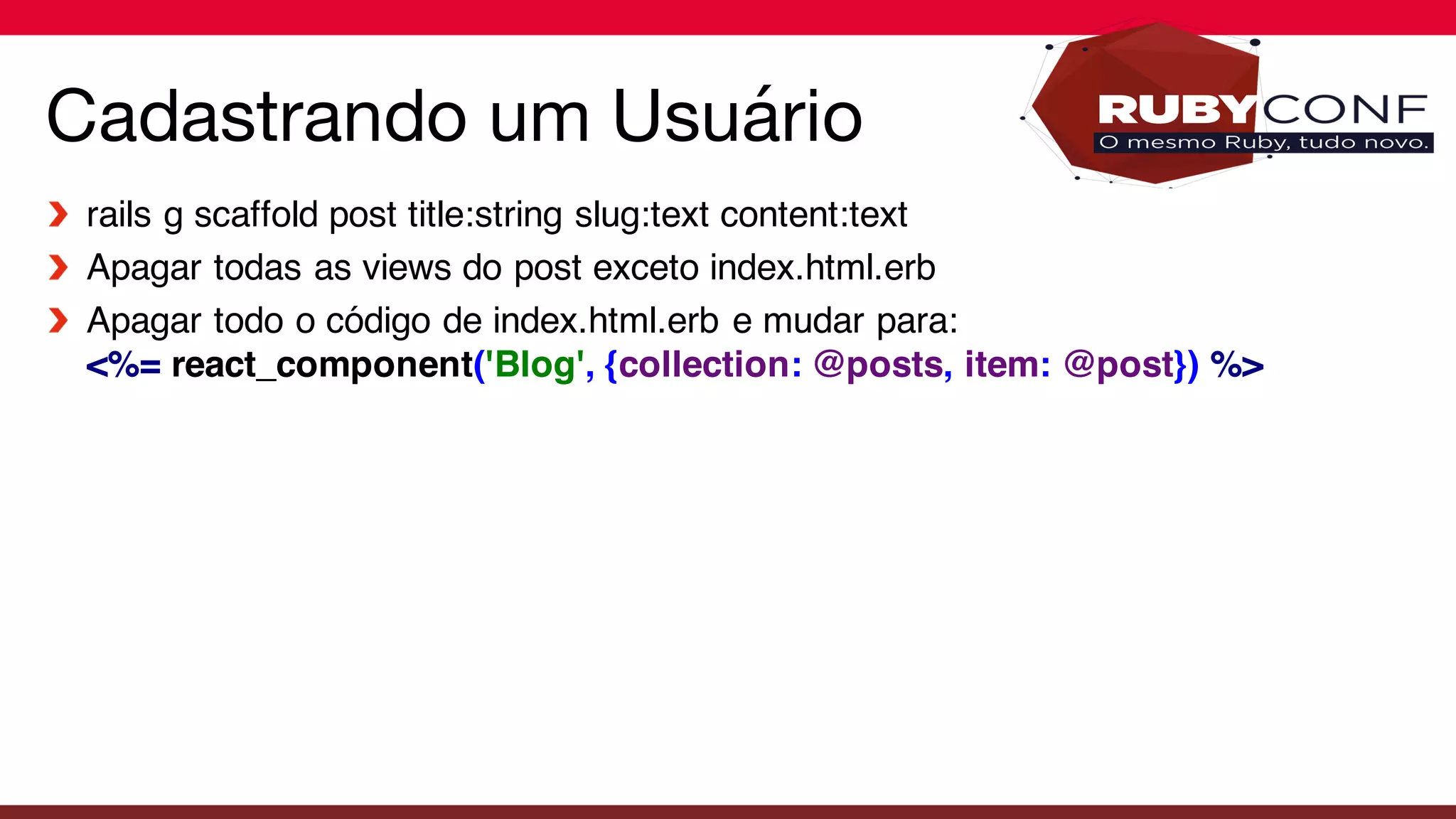
![Globalcode – Open4education Alterações no controller Fazer todos os métodos retornarem json, mais ou menos assim (não é a melhor tecnica, mas boa o suficiente para o exemplo) class PostsController < ApplicationController before_action :set_post, only: [:show, :edit, :update, :destroy] def index @posts = Post.all end def show @posts = Post.all render :index end # GET /posts/new def new @post = Post.new render :index end # POST /posts # POST /posts.json def create @post = Post.new(post_params) respond_to do |format| if @post.save format.json { render json: @post, status: :created, location: @post } else format.json { render json: @post.errors, status: :unprocessable_entity } end end end # PATCH/PUT /posts/1 # PATCH/PUT /posts/1.json def update respond_to do |format| if @post.update(post_params) format.json { render json: @user, status: :ok, location: @post } else format.json { render json: @post.errors, status: :unprocessable_entity } end end end # DELETE /posts/1 # DELETE /posts/1.json def destroy @post.destroy respond_to do |format| format.json { head :no_content } end end private # Use callbacks to share common setup or constraints between actions. def set_post @post = Post.find_by(slug: params[:id]) || Post.find(params[:id]) end # Never trust parameters from the scary internet, only allow the white list through. def post_params params.require(:post).permit(:title, :slug, :content) end end](https://image.slidesharecdn.com/rubyconf2015-railsreactjs-150919162934-lva1-app6892/75/Interfaces-ricas-com-Rails-e-React-JS-Rubyconf-2015-9-2048.jpg)
